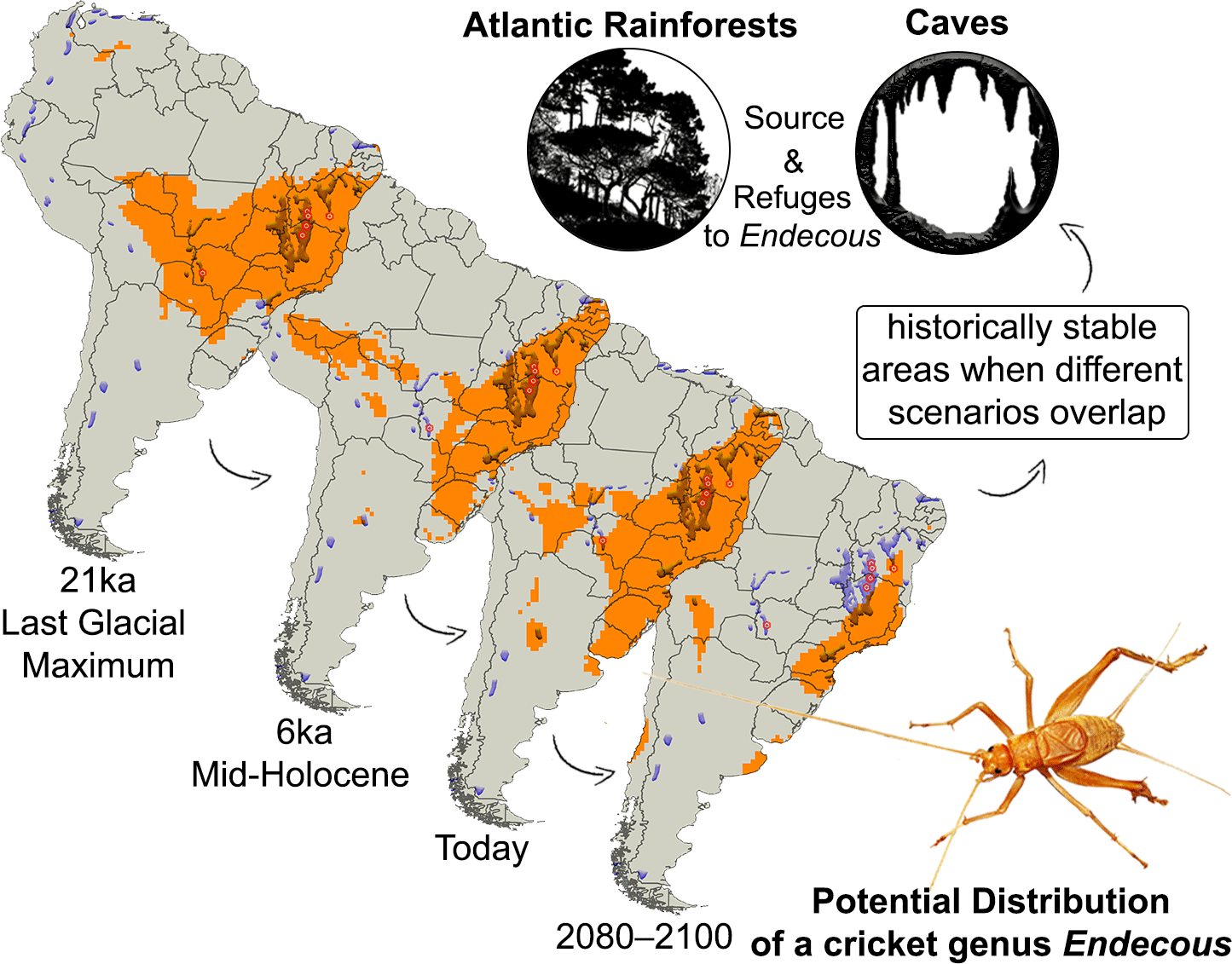Article contents
Persisting while changing over time: modelling the historical biogeographic of cave crickets (Orthoptera, Grylloidea) in Neotropics
Published online by Cambridge University Press: 09 January 2023
Abstract

Using species distribution modelling (SDMs) techniques, we predicted the biogeographic history of crickets commonly found in Neotropical caves as a way to detect potential long-term environmental refuges in South America. Our models were built based on a thorough investigation of existing database regarding the genus Endecous Saussure, 1878 (Ensifera: Phalangopsidae) occurrences. The predictions of their distribution were obtained for two paleoclimate scenarios (LGM — 21 ka and Mid-Holocene — 6 ka), the current climate scenario (0 ka) and one future global warming climate scenario (RCP8.5, 2080–2100). Our findings suggest that in the past, the potential distribution of the crickets was wider, with potential forest corridors connecting different karst areas with caves within their occupancy area. The future prediction indicates a drastic reduction in their spatial distribution with an increased potential for isolation in subterranean ecosystems. Atlantic humid forest patches and caves represent the main environmental refuges for these crickets. Considering the ongoing impacts on surface environments and future climate change, the conservation of caves and karst landscapes has become one of the main strategies for the maintenance of these crickets and all the correlated subterranean communities.
- Type
- Research Article
- Information
- Copyright
- © The Author(s), 2023. Published by Cambridge University Press
References
- 3
- Cited by





